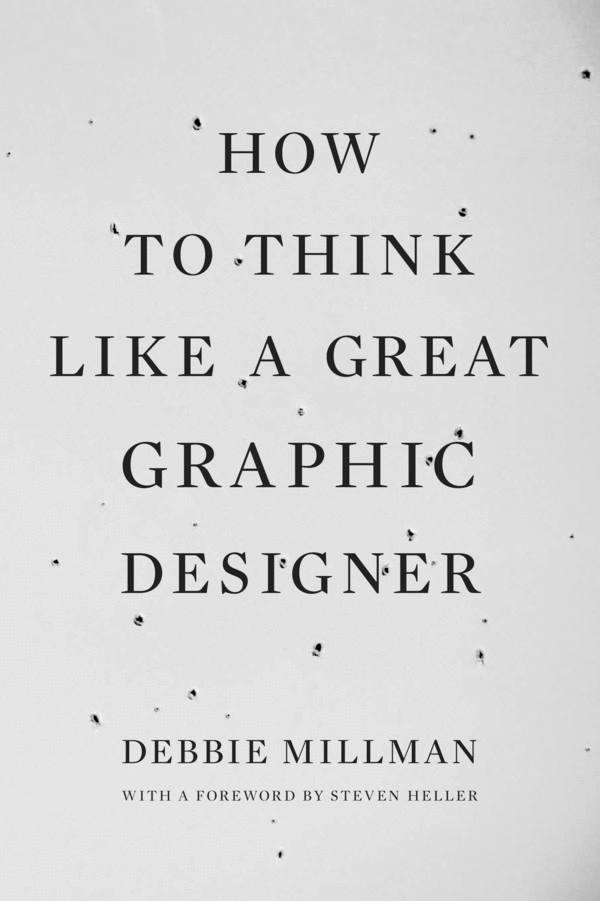Creativity Is Like a Slot Machine
by Maria Popova
“To invent, you have to take the odd and the strange combination of the years of knowledge and experience.”
 In How to Think Like a Great Graphic Designer(UK; public library), Debbie Millman (previously) sits down with 20 of today’s most celebrated graphic designers to unravel the secrets of their creative process, work ethic, and general philosophy on life. The result is a kind of modern-day equivalent of the 1942 gemAnatomy of Inspiration, presenting a rare glimpse of the creative machinery behind some of today’s most talented and influential designers through conversations that reveal in equal measure their purposeful brilliance and tender humanity.
In How to Think Like a Great Graphic Designer(UK; public library), Debbie Millman (previously) sits down with 20 of today’s most celebrated graphic designers to unravel the secrets of their creative process, work ethic, and general philosophy on life. The result is a kind of modern-day equivalent of the 1942 gemAnatomy of Inspiration, presenting a rare glimpse of the creative machinery behind some of today’s most talented and influential designers through conversations that reveal in equal measure their purposeful brilliance and tender humanity.
One of the most stimulating interviews is with the inimitable Paula Scher — identity and branding goddess, Pentagrampartner, maker of magnificent hand-drawn maps, tireless champion ofcombinatorial creativity — who echoes Thoreau in this beautiful, poetic definition of success:
If I get up every day with the optimism that I have the capacity for growth, then that’s success for me.
Like many of history’s greatest scientists, Scher speaks to the power of intuition and additive knowledge in sparking those creative Eureka! moments, stressing the importance of what novelist William Gibson has termed “personal micro-culture.” She illustrates the point with an exquisite metaphor:
There’s a certain amount of intuitive thinking that goes into everything. It’s so hard to describe how things happen intuitively. I can describe it as a computer and a slot machine. I have a pile of stuff in my brain, a pile of stuff from all the books I’ve read and all the movies I’ve seen. Every piece of artwork I’ve ever looked at. Every conversation that’s inspired me, every piece of street art I’ve seen along the way. Anything I’ve purchased, rejected, loved, hated. It’s all in there. It’s all on one side of the brain.And on the other side of the brain is a specific brief that comes from my understanding of the project and says, okay, this solution is made up of A, B, C, and D. And if you pull the handle on the slot machine, they sort of run around in a circle, and what you hope is that those three cherries line up, and the cash comes out.
But rather than willing the cherries into alignment, the essence of creative alchemy, says Scher, is in allowing for unconscious processing — that intuitive incubation period, to use T.S. Eliot’s term, that allows for all the combinatorial pieces gathered over years of being alive and awake to the world to click into place, to congeal into what we call “invention”:
I am conscious of resolving the brief, but I don’t think about it too hard. I allow the subconscious part of my brain to work. That’s the accumulation of my whole life. That is what’s going on in the other side of my brain, trying to align with this very logical brief.And I’m allowing that to flow freely, so that the cherries can line up in the slot machine. I don’t know when that’s going to happen. I’ve had periods of time when the cherries never line up, and that’s scary, because then you have to rely on tricks you already have up your sleeve — the tricks in your knowledge from other jobs. And very often you rely on this.But mostly what you want to do is invent. And to invent, you have to take the odd and the strange combination of the years of knowledge and experience on one side of the brain, and on the other side, the necessity for the brief to make sense. And you’re drawing from that knowledge to make an analogy and to find a way to solve a problem, to find a means of moving forward — in a new way — things you’ve already done.When you succeed, it’s fantastic. It doesn’t always happen. But every so often, you take a bunch of stuff from one side of your head, and a very logical list of stuff from the other side, and through that osmosis you’re finding a new way to look at a problem and resolve a situation.
Perhaps George Lois was right, after all, when he stated that creativity isdiscovering ideas rather than “creating” them and John Cleese correctly defined it as “a way of operating” rather than a mystical talent.
How to Think Like a Great Graphic Designer is fantastic in its entirety — highly recommended.




